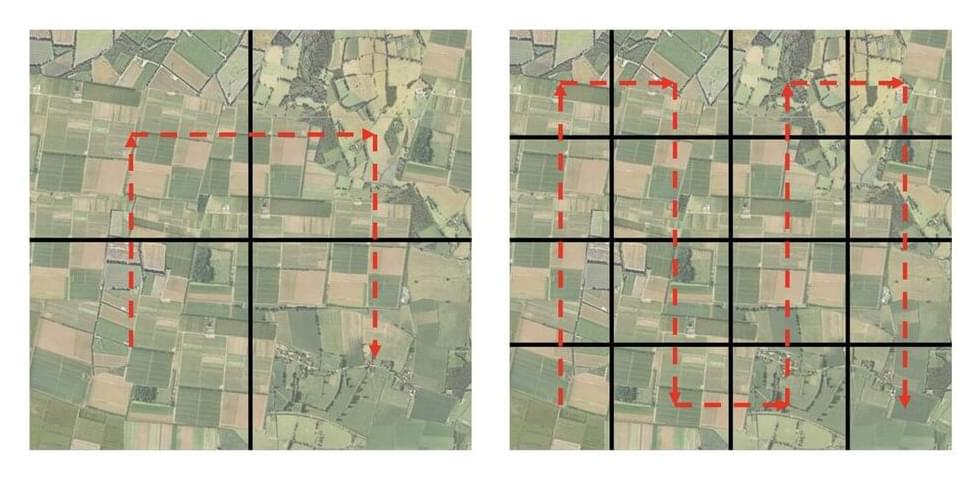A University of Melbourne expert says education cannot only focus on knowing and doing – it must explicitly embrace being to teach the ‘whole child’.



In a recent study published in the Journal of Experimental Medicine, researchers investigated whether bone marrow-derived cells with heterozygous loss of Dnmt3a (Dnmt3a+/Δ), the most common genetic alteration in clonal hematopoiesis (CH), contribute to colitis-associated colon cancer (CAC) pathogenesis.
Study: Hematopoietic-specific heterozygous loss of Dnmt3a exacerbates colitis-associated colon cancer. Image Credit: vetpathologist/Shutterstock.com.

An exciting new cancer drug has recently entered into a phase 1 clinical trial supported by promising pre-clinical work. The drug, named AOH1996, targets a protein called proliferating cell nuclear antigen (PCNA), an essential player in the biological processes of DNA replication and repair. A team of researchers from City of Hope published the data describing how they identified and characterized AOH1996 in Cell Chemical Biology last week. Since then, the news of AOH1996 has appeared prominently in both scientific and mainstream media.
Using a rational drug design approach that develops drugs based on their specific biological targets, the researchers identified AOH1996. Lead researcher Linda Malkas named the drug after Anna Oliva Healey, a girl born in 1996 who succumbed to neuroblastoma at age 9.
In the laboratory, the researchers tested AOH1996 on over 70 different kinds of tumor cells as well as some healthy control cells. While the drug killed the cancer cells, it notably does not affect non-cancer cells, including blood cells and the cells lining the airway. This indicates AOH1996 as a selective drug that will suppress tumor growth but likely not cause adverse effects that can occur when a cancer drug damages healthy cells.



Generative AI models can crank out anything from poetry and prose to images and code at your command. But to coax your desired output from these AI tools, you need to craft the right input — AKA, the prompt.
Prompts are what guide the AI model’s output and influence its tone, style and quality. And good prompts are what elicit brilliant text and stunning images.
“Writing good prompts is the key to unlocking the power and potential of generative AI,” said Jennifer Marsman, principal engineer in Microsoft’s Office of the Chief Technology Officer.
Check out Japan’s National Institute of Advanced Industrial Science and Technology (AIST) new robot. The company released a video that is bound to have all other robotic firms worrying. This slightly creepy, yet super handy, humanoid machine may just be the most helpful robot yet!


Unmanned aerial vehicles (UAVs), commonly known as drones, are already used in countless settings to tackle real-world problems. These flying robotic systems can, among other things, help to monitor natural environments, detect fires or other environmental hazards, monitor cities and find survivors of natural disasters.
To tackle all of these missions effectively, UAVs should be able to reliably detect targets and objects of interest in their surroundings. Computer scientists have thus been trying to devise new computational techniques that could enable these capabilities, using deep learning or other approaches.
Researchers at Yunnan University and the Chinese Academy of Sciences recently introduced a new object-detection system based on edge computing. Their proposed system, introduced in the IEEE Internet of Things Journal, could provide UAVs with the ability to spot relevant objects and targets in their surroundings without significantly increasing their power-consumption.

With the rapid growth of the smart and wearable electronic devices market, smart next-generation energy storage systems that have energy storage functions as well as additional color-changing properties are receiving a great deal of attention. However, existing electrochromic devices have low electrical conductivity, leading to low efficiency in electron and ion mobility, and low storage capacities. Such batteries have therefore been limited to use in flexible and wearable devices.
On August 21, a joint research team led by Professor Il-Doo Kim from the KAIST Department of Materials Science and Engineering (DMSE) and Professor Tae Gwang Yun from the Myongji University Department of Materials Science and Engineering announced the development of a smart electrochromic Zn-ion battery that can visually represent its charging and discharging processes using an electrochromic polymer anode incorporated with a “π-bridge spacer,” which increases electron and ion mobility efficiency.
Their research was published as an inside cover article for Advanced Materials on August 3 under the title, “A π-Bridge Spacer Embedded Electron Donor-Acceptor Polymer for Flexible Electrochromic Zn-Ion Batteries.”